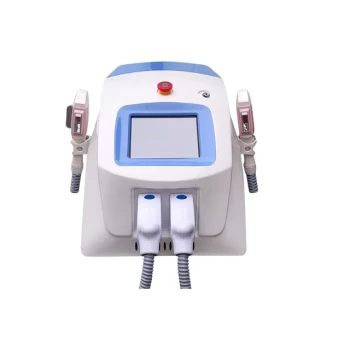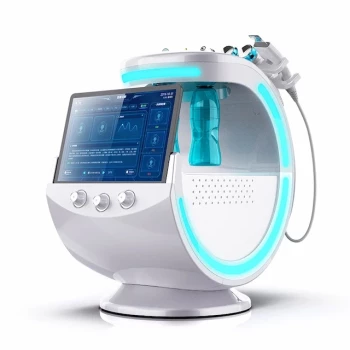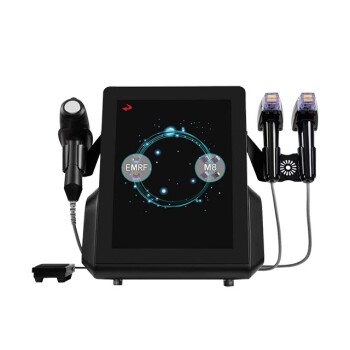In short, Intense Pulsed Light (IPL) is a versatile treatment primarily used to correct pigment-related issues on the skin. It is highly effective for reducing sun spots, age spots, redness from rosacea, and removing unwanted dark hair on lighter skin tones.
The core principle of IPL is using broad-spectrum light to target and heat specific color pigments in the skin—primarily brown melanin (in spots and hair) and red hemoglobin (in blood vessels). Its effectiveness is directly tied to the contrast between the target pigment and your natural skin tone.
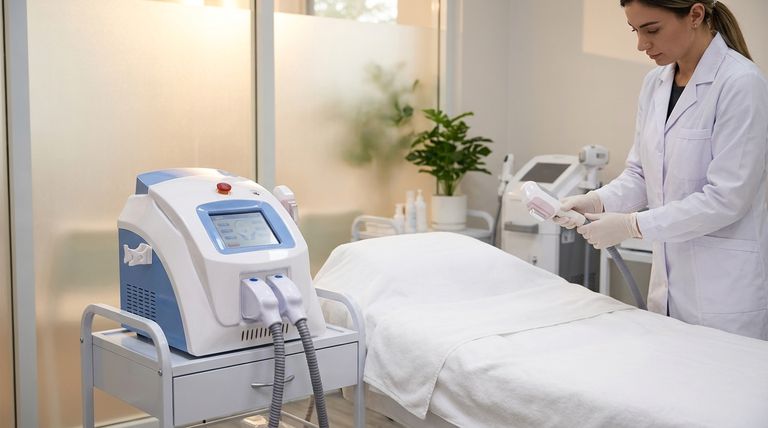
How IPL Works: Targeting Color with Light
IPL is a technology that uses a high-intensity, broad-spectrum light source, not a single-wavelength laser. This versatility is both its greatest strength and its most important limitation.
The Principle of Selective Photothermolysis
The science behind IPL is called selective photothermolysis. This means it uses light (photo) to create heat (thermo) to destroy (lysis) a specific target without damaging surrounding tissue.
The device emits flashes of light that are absorbed by cells with a high concentration of pigment. This light energy converts to heat, which then breaks down the unwanted pigment or damages the hair follicle.
The Critical Importance of Contrast
For the treatment to be safe and effective, the light needs a clear target. It works best when there is a significant color difference between the unwanted pigment (like a dark sun spot) and the surrounding skin.
Without sufficient contrast, the device cannot easily differentiate its target, which is why skin tone is such a critical factor in determining who is a good candidate.
Primary Applications of IPL Therapy
Because IPL targets pigment, it is an effective solution for a range of cosmetic concerns rooted in skin coloration.
Reversing Sun Damage and Hyperpigmentation
IPL is an excellent treatment for sun spots, age spots, and freckles. The light is absorbed by the excess melanin in these spots, which breaks it down. The treated pigment will temporarily darken and then flake off within one to two weeks, revealing clearer skin underneath.
Reducing Redness and Vascular Lesions
For conditions like rosacea or broken capillaries, IPL targets the hemoglobin in red blood cells. The heat causes the small, visible vessels to collapse and be reabsorbed by the body, significantly reducing overall redness.
Unwanted Hair Removal
IPL is also a popular method for hair reduction. It targets the melanin in the hair follicle during its active growth phase. The heat damages the follicle, inhibiting its ability to grow new hair.
Mild Skin Rejuvenation
The heat generated during an IPL session also provides a secondary benefit: it gently warms the deeper layers of the skin, which can stimulate collagen production. This can lead to a modest improvement in fine lines and overall skin texture over a series of treatments.
Understanding the Trade-offs and Limitations
IPL is a powerful tool, but it is not a one-size-fits-all solution. Understanding its limitations is key to achieving a safe and successful outcome.
It Is Not a True Laser
A laser uses a single, focused wavelength of light to hit a very specific target. IPL uses a broad spectrum of light, making it less precise. This allows it to treat larger areas quickly but offers less targeted power than a laser.
Skin Tone is the Deciding Factor
This is the most critical limitation. Because IPL targets melanin, it can have difficulty distinguishing between the pigment in a sun spot and the natural pigment in the skin itself. For individuals with darker skin tones (Fitzpatrick types IV-VI), IPL carries a significant risk of burns, blistering, or causing permanent hyperpigmentation (darkening) or hypopigmentation (lightening).
Ineffective on Light-Colored Hair
Just as it needs dark pigment for sun spots, IPL for hair removal requires dark pigment in the hair follicle. It is completely ineffective on blonde, gray, red, or white hair because there is no melanin for the light to target.
Common (and Expected) Side Effects
While generally safe for the right candidate, some temporary side effects are normal. These include a sensation like a rubber band snap during treatment, temporary redness and mild swelling, and the darkening of brown spots before they flake away.
Is IPL the Right Choice for You?
Choosing the correct treatment depends entirely on your skin, your concerns, and your goals.
- If your primary focus is sun spots, freckles, or redness on fair to medium skin: IPL is often considered a first-line, highly effective treatment.
- If your primary focus is hair removal with dark hair and lighter skin: IPL can provide excellent, long-term hair reduction.
- If your primary focus is deep wrinkles, significant scarring, or skin tightening: You will likely need a more aggressive treatment, such as a fractional laser or microneedling.
- If you have a darker skin tone: You should avoid IPL and consult a professional about safer alternatives, such as specific Nd:YAG lasers, for your skin concerns.
Ultimately, the best path forward is determined by a thorough consultation with a qualified dermatologist or technician who can accurately assess your skin.
Summary Table:
| Application | Key Benefit | Ideal For |
|---|---|---|
| Sun Damage & Pigmentation | Breaks down excess melanin in spots | Sun spots, age spots, freckles |
| Redness & Vascular Lesions | Targets hemoglobin to reduce redness | Rosacea, broken capillaries |
| Hair Removal | Damages hair follicles for long-term reduction | Dark hair on light skin tones |
| Skin Rejuvenation | Stimulates collagen for improved texture | Mild fine lines, overall skin tone |
Ready to enhance your clinic's service offerings with professional IPL technology?
BELIS specializes in providing high-performance medical aesthetic equipment to medical aesthetics clinics and premium beauty salons. Our advanced IPL systems deliver reliable, versatile results for your clients' most common skin concerns—helping you build trust and grow your business.
Contact BELIS today to discover how our IPL solutions can elevate your practice and drive client satisfaction.
Visual Guide
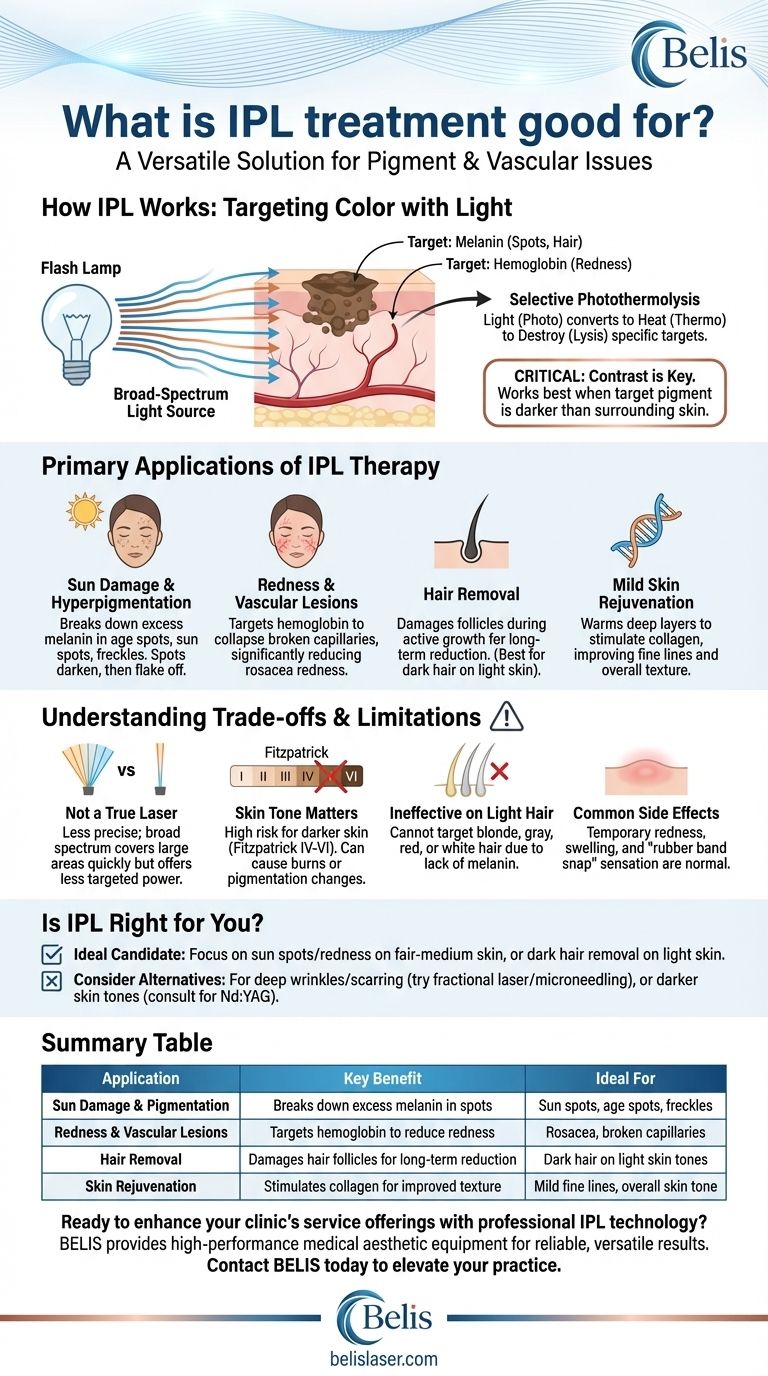
Related Products
- IPL SHR Hair Removal Machine for Permanent Hair Removal
- Clinic Use IPL and SHR Hair Removal Machine with Nd Yag Laser Tattoo Removal
- Clinic Use IPL SHR ND YAG Laser Hair Removal RF Skin Tightening Machine
- IPL SHR+Radio frecuency machine
- 4D 12D HIFU Machine Device for Skin Tightening and Lifting
People Also Ask
- What should I look for in an IPL machine? Key Features for Effective Hair Removal
- Can IPL be used on all skin types? Understanding Risks for Darker Skin Tones
- Does IPL hair removal really work? Unlock Long-Term Hair Reduction with Science
- What are the negative effects of IPL? Understanding Risks for Safe Treatment
- Does IPL work on all skin types? The critical role of the Fitzpatrick scale in safety and results
